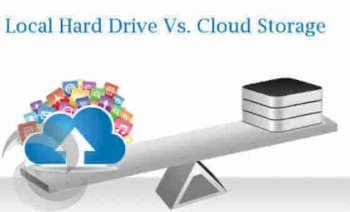How to choose between Cloud Storage and On-Premise Storage
Data has become one of the most important resources for business success. Humongous volumes of data are being generated everyday which go through analysis for various reasons. Such amount of data needs to be stored and this is one area enterprises often get confused about.
Data should be stored on servers, but the question remains what to choose: an on-premise solution or cloud storage. Cloud technology has gained traction with most of the modern startups using the platform for their data needs, but that doesn’t mean it is right for all enterprises.
Both cloud and on-premise solutions have their own advantage and disadvantages and it is crucial to select the right one for your data needs.
Below we walk you through the important considerations when choosing between cloud and on-premise storage. But before we begin let’s take a quick look at both the technologies.
On-Premise Storage Solution
On-premise storage utilizes local hardware, network, computers, and local servers to store the data. The company has to purchase all the necessary hardware including the servers which are set up in the workplace. It is considered to be on-premise data solution as the server is locally operated.
Cloud Storage
Remote servers are used to store data in the case of cloud storage. The connectivity is established through internet and data exchange happens through the same. The server and related infrastructure is maintained by the vendor who offers cloud services.
Enterprises pay for the space they use on the cloud which can be changed as per requirement. The cloud provider also sells bandwidth and applications that can be hosted on the platform.
Now we will analyze various aspects which will help you understand the nuances of both technologies.
Cloud vs. On-Premise
Infrastructure
The enterprise is responsible for deciding the specification of hardware that it will use. For cloud storage, they have to take what the provider offers or may get to choose from some options.
If performance is a business priority, then on-premise makes sense as you can pick and choose the best configuration for your storage needs.
Investment
Let’s face it- you have to make a significant investment if you want to set up on-premise storage. You need to pay for the hardware and installation along with required repairs and maintenance costs.
Plus, an expert IT team may be needed to look after the servers and ensure their proper functioning.
With cloud storage, you pay for the space you use which can even be paid in monthly installments. But cloud can turn out more expensive than on-premise when you are looking at long term use or large capacity points.
Control and Safety
On-premise solutions give greater control and security than cloud. It is also more flexible when it comes to timeframes and rollouts. Cloud providers tend to have an inflexible hosting infrastructure as the enterprises don’t have full control of execution. They may also have policies regarding use of data or deployment of the infrastructure.
The data is hosted locally and only authorized persons can gain control of it. You don’t face the threat of hacking or data theft that is possible when you transact data over internet in the case of cloud storage.
But that is not to say that cloud solutions are unsafe. Providers are constantly upgrading their protocols and using strong encryption which reduces the chances of any attack or fraud.
On-premise storage can also be vulnerable to theft or vandalism caused by internal staff and employees.
As a general practice, data which is very sensitive should only be kept on-premise to save it from any breaches.
Performance
Performance is a key issue for enterprises who run huge workloads and deal with data intensive processes. The locality of data is a great advantage when it comes to dealing with large files. It can be done with extreme speeds of up to 40 MB/sec.
Modern day servers are also being engineered to have high computing capabilities which are capable of running modern data intensive workloads and advanced processes like AI and analytics. Even the Tier One applications responsible for business critical applications are best run on-premise.
On the other hand, cloud solutions are limited by the bandwidth and cannot match the speed of on-premise solutions. Also, the speed of internet is a crucial factor and the distance with remote server also increases latency.
Cloud storage also suffers from downtime and system outages which are quite common. In 2012, Netflix encountered a 20 hour outage for which an AWS center in Virginia was responsible.
While you have to depend on your cloud provider for repair work, your technicians can attend to on-premise outages instantly to get them live and running.
Scalability
Cloud systems are really easy to scale- you just request more space to be allotted to your account and pay for it.
But for on-premise systems, you have to purchase the additional disk drives, hardware, and also install it. There is also a limit that you can scale up to in on-premise systems while cloud makes it infinite.
Access
The biggest advantage of cloud storage is that anyone can access it anytime from anywhere through internet. This has enabled the development of an advanced remote workforce who can access enterprise data across multiple devices.
On-premise network shares information via the interoffice network using technologies such as LAN. Only authorized internal employees can access it and that reduces the threats of manipulation.
The Takeaway
Cloud storage is suited for small to medium companies whose workloads are not that data intensive. But an enterprise that deals with sensitive data and needs high security and control, on-premise is the wiser choice.
High computing organizations also benefit from in-house storage options which are equipped with advanced processors and network capabilities.
But there is one thing you cannot avoid- the upfront investment that you need to purchase and install an on-premise storage system. Apart from that, it can be the perfect solution for large scale storage and running modern day applications.





